Introduction
The Rainbow Garden Vegetable Tray is not just a feast for the eyes; it’s a celebration of health, flavor, and creativity combined into one vibrant dish. As a versatile and visually appealing option, this vegetable tray can transform any gathering into a colorful culinary experience. Whether you are hosting a party, preparing for a family gathering, or simply looking for a healthy snack option, this dish fits perfectly into any occasion. The array of colors not only enhances the presentation but also signifies a multitude of nutritional benefits that each vegetable brings to the table.
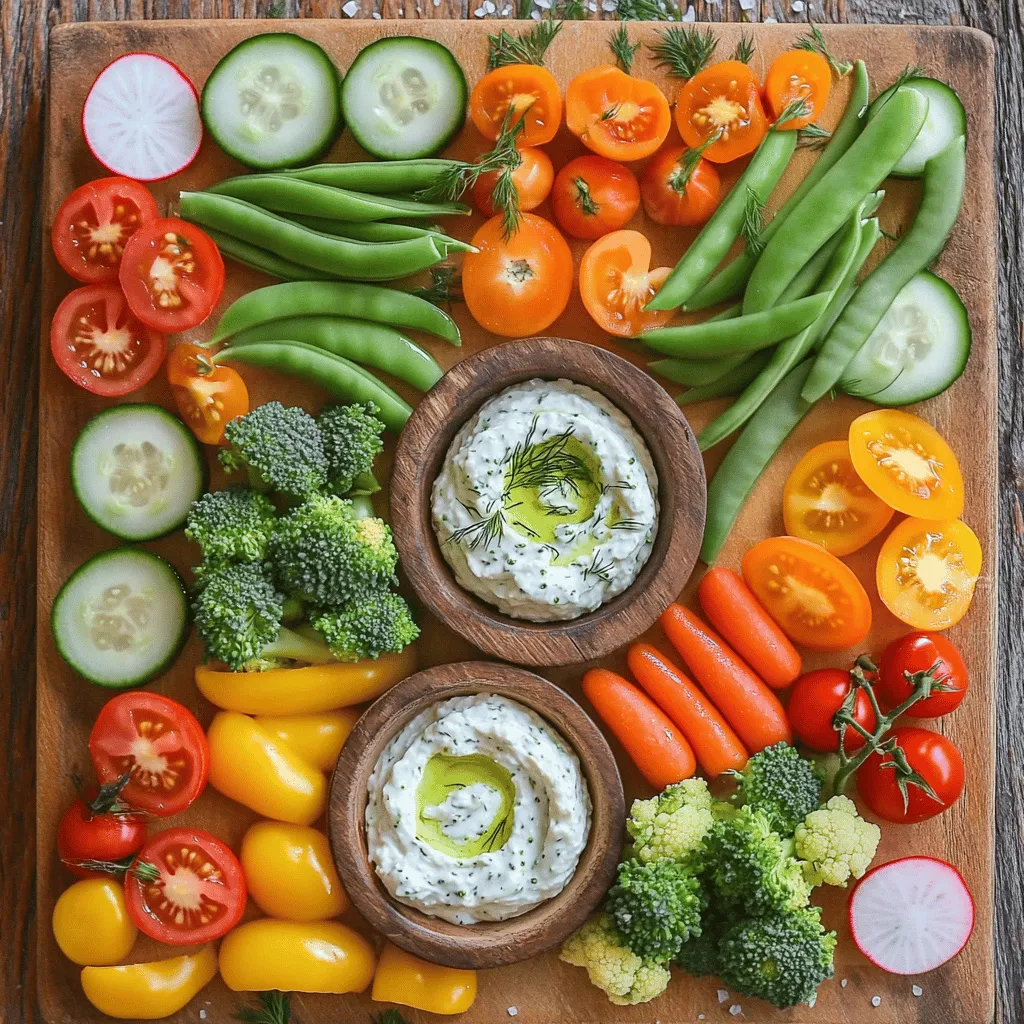
Incorporating colorful vegetables into your meals is essential for a balanced diet. Each hue represents different vitamins, minerals, and antioxidants, making it crucial to eat a variety of colors. This Rainbow Garden Vegetable Tray encourages a fun approach to healthy eating, allowing you to indulge in the goodness of nature while keeping your meals visually exciting.
The Nutritional Benefits of a Rainbow Vegetable Tray
The health benefits of a Rainbow Vegetable Tray extend far beyond its aesthetic appeal. Each vegetable included in the tray offers distinct nutritional advantages, making it a powerhouse of health benefits. Here’s a closer look at the contributions of each vegetable and the importance of diversifying your color palette when it comes to fruits and vegetables.
Cherry Tomatoes
Cherry tomatoes are small but mighty. These bite-sized beauties are packed with vitamins C and K, potassium, and folate. They are also rich in antioxidants, particularly lycopene, which has been linked to heart health and reduced risk of certain cancers. The sweet, juicy flavor of cherry tomatoes adds a burst of freshness to the tray, making them a favorite among both adults and children alike.
Cucumbers
Cucumbers are a refreshing addition that brings hydration to the table, as they are composed of about 95% water. This makes them perfect for hot summer days or as a light snack. Nutritionally, cucumbers contain vitamin K, as well as several B vitamins. Their mild flavor and crisp texture can balance the more robust flavors of other vegetables, making them a versatile choice.
Bell Peppers
Bell peppers are a colorful highlight of the Rainbow Garden Vegetable Tray, available in vibrant shades of red, yellow, orange, and green. Each color offers unique health benefits: red bell peppers are high in vitamin A and C, while yellow and orange varieties contain beta-carotene. Green bell peppers provide fiber and antioxidants. The crunch and sweetness of bell peppers add a delightful contrast to the tray, making them a favorite for dipping.
Baby Carrots
Baby carrots are a convenient and nutritious option that adds a natural sweetness and crunch to the vegetable tray. They are an excellent source of beta-carotene, which the body converts into vitamin A, essential for vision and immune function. Additionally, baby carrots provide fiber, potassium, and antioxidants. Their bright orange color enhances the visual appeal of the tray while also offering a satisfying crunch.
Snap Peas
Snap peas introduce a unique sweetness and a crisp texture to the Rainbow Vegetable Tray. They are low in calories and high in vitamins C and K, making them an excellent choice for health-conscious snackers. The sweetness of snap peas pairs well with dips, and their vibrant green color adds to the overall aesthetic of the dish. With their fiber content, snap peas also support digestive health.
Radishes
Radishes are small, crunchy vegetables that pack a punch in terms of flavor. Their peppery notes can add a distinct kick to the vegetable tray. Nutritionally, radishes are low in calories yet high in vitamins C and B6, as well as potassium. They also contain compounds that may aid in digestion, making them a beneficial addition to your diet. The bright red or white skin of radishes contributes to the colorful display, enticing guests to enjoy their refreshing taste.
Broccoli
Broccoli is a nutritional powerhouse that brings numerous health benefits to the Rainbow Vegetable Tray. It is rich in vitamins C, K, and A, as well as folate and fiber. Broccoli contains sulforaphane, a compound that may have cancer-fighting properties. Its dense florets add a distinctive texture to the tray, and when blanched slightly, they can be a delightfully tender addition that complements dips beautifully.
Cauliflower
Cauliflower is a versatile and low-calorie alternative to many starchy vegetables. It is rich in vitamins C and K, folate, and fiber. The white hue of cauliflower provides a contrast to the colorful vegetables in the tray, making it visually appealing. Additionally, cauliflower can be used in various ways, whether served raw, roasted, or as a base for dips. Its subtle flavor allows it to take on the taste of whatever dip it’s paired with, making it a fantastic addition to the vegetable tray.
Ingredients Breakdown
Creating a Rainbow Garden Vegetable Tray is simple and requires a selection of fresh, colorful vegetables. Below is a detailed description of each ingredient you will need to bring this dish to life.
1. Cherry Tomatoes: Choose a mix of red and yellow cherry tomatoes for a pop of color. Their sweet flavor and juicy texture will be a hit among your guests.
2. Cucumbers: Opt for crisp, firm cucumbers. You can slice them into rounds or spears, depending on your preference.
3. Bell Peppers: Select a variety of bell peppers in different colors. Red, yellow, and orange will bring sweetness, while green will add a slightly bitter contrast.
4. Baby Carrots: Look for fresh baby carrots that are bright orange and crunchy. They are ideal for dipping and snacking.
5. Snap Peas: Fresh snap peas should be bright green and crisp. They should snap easily when bent, indicating their freshness.
6. Radishes: Choose firm radishes with smooth skin. They can be sliced or left whole for a fun, interactive element to the tray.
7. Broccoli: Fresh broccoli florets should be green and firm. Consider blanching them briefly to enhance their color and texture.
8. Cauliflower: Select a fresh head of cauliflower. You can cut it into bite-sized florets for easy dipping and eating.
Each of these ingredients not only contributes to the visual appeal of the Rainbow Garden Vegetable Tray but also ensures that you and your guests are getting a wide range of nutrients with every bite.
As you prepare to assemble your Rainbow Garden Vegetable Tray, remember that the presentation is key. Arrange the vegetables in a way that showcases their vibrant colors, and don’t forget to add dips like hummus or tzatziki sauce for a delightful flavor combination. This dish is not only a treat for the taste buds but also a visually stunning centerpiece that will impress anyone who lays eyes on it.
In the next part of this article, we will delve into the step-by-step instructions for assembling your Rainbow Garden Vegetable Tray, along with tips for the best results and ways to customize the tray to suit your tastes and dietary preferences. Stay tuned for more insights on making this healthy and delicious dish a star at your next gathering!
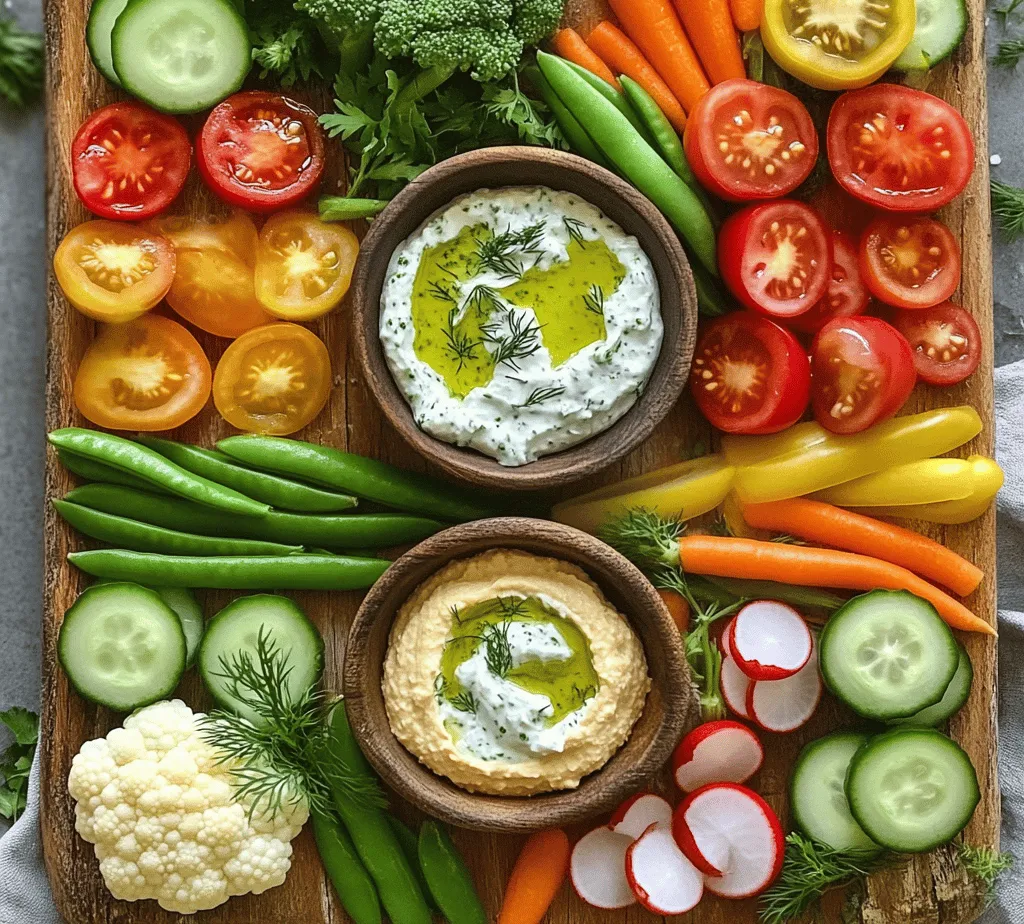
Hummus: Nutritional Content and Variations
Hummus is not only a delicious dip but also a nutritional powerhouse. Made primarily from chickpeas, tahini, olive oil, lemon juice, and garlic, it is rich in protein, fiber, and healthy fats. A standard serving of hummus (about 2 tablespoons) contains approximately 70 calories, 2 grams of protein, 5 grams of fat, and 2 grams of fiber. This makes it a great choice for anyone looking to add a healthy dip to their diet.
Moreover, hummus is versatile. You can easily customize it by adding various ingredients to suit your taste or dietary needs. For example, roasted red peppers can add a sweet and smoky flavor, while jalapeños can offer a spicy kick. For a richer taste, try adding sun-dried tomatoes or basil. Additionally, you can make it lower in calories by reducing the amount of oil or incorporating more vegetables like spinach or beets, which will not only change the flavor but also enhance the nutritional profile.
Tzatziki Sauce: Ingredients and Health Benefits
Tzatziki sauce is another fantastic option for your Rainbow Garden Vegetable Tray. This Greek dip is primarily made from yogurt, cucumber, garlic, olive oil, and fresh herbs, particularly dill or mint. It’s refreshingly creamy and complements the crunchiness of fresh vegetables perfectly.
From a nutritional standpoint, tzatziki is low in calories and high in protein, thanks to the yogurt. A typical serving provides calcium, probiotics, and vitamins C and K from the cucumber and herbs. This sauce is not only delicious but also promotes gut health and supports the immune system.
You can easily modify tzatziki by swapping out cucumber for other vegetables like grated carrots or zucchini, or you could even add some spice with chopped jalapeños for a kick. This versatility makes tzatziki a great addition to your vegetable tray.
Fresh Herbs: Enhancing Flavor and Nutrition
Fresh herbs are a key component in elevating the flavors of both hummus and tzatziki. Herbs like basil, parsley, dill, and cilantro are not only flavorful but also packed with nutrients. They provide antioxidants, vitamins, and minerals that can contribute to overall health.
When preparing your Rainbow Garden Vegetable Tray, consider adding fresh herbs as garnishes or using them as a base for your dips. For instance, finely chopped herbs can be mixed into hummus or tzatziki for an added burst of flavor. Additionally, using herbs like mint or basil can brighten the overall taste profile and make the dips even more refreshing.
Preparation Steps for the Rainbow Garden Vegetable Tray
Step-by-Step Guide on How to Prepare Each Vegetable
1. Select Your Vegetables: Start with a colorful selection of vegetables. Recommended choices include bell peppers (red, orange, yellow, and green), carrots, cucumbers, cherry tomatoes, radishes, and celery.
2. Washing: Rinse all vegetables under cold running water. Use a vegetable brush for root vegetables like carrots and radishes to remove any dirt.
3. Cutting Techniques:
- Bell Peppers: Slice off the top and bottom, remove the seeds, and cut into strips or bite-sized squares.
- Carrots: Peel and then slice them into sticks or rounds. For visual appeal, consider using a vegetable peeler to create ribbons.
- Cucumbers: Slice into rounds, or cut them into sticks for easy dipping. For larger cucumbers, removing the seeds can improve texture.
- Cherry Tomatoes: Serve whole or cut in half for easier dipping.
- Radishes: Trim the tops and tails, then slice thinly or leave whole for crunch.
- Celery: Cut the stalks into 3-4 inch sticks, ensuring they’re uniform for presentation.
4. Optimal Presentation: Aim for uniform sizes to ensure an appealing appearance. You may also want to keep the skin on some vegetables, such as cucumbers and carrots, to maintain color and texture.
Tips on How to Effectively Arrange the Vegetables for Stunning Visual Appeal
Creating a stunning vegetable tray is all about arrangement. Follow these tips for a visually appealing presentation:
- Color Coordination: Arrange your vegetables in a rainbow pattern, starting with red bell peppers, followed by orange carrots, yellow bell peppers, green cucumbers, blue (or purple) vegetables like purple carrots or red cabbage, and finally, white radishes or cauliflower.
- Height Variation: Use varying heights to create depth. For example, you can stack cherry tomatoes or create small mounds of cut vegetables.
- Dip Placement: Place your hummus and tzatziki in small bowls at the center or on one side of the tray. This draws attention to the dips and makes them easily accessible.
- Garnish with Herbs: Use fresh herbs as garnishes around the tray. Parsley or cilantro can add a pop of green and enhance the fresh appeal of the tray.
Suggestions for Alternative Vegetables Based on Seasonal Availability or Personal Preference
Feel free to experiment with seasonal vegetables. Spring might bring radishes and asparagus, while summer could offer zucchini and bell peppers in abundance. During fall, consider including roasted sweet potatoes or squash. There are no hard and fast rules; the goal is to include vegetables that you enjoy and that are available in your local market.
Creative Presentation Ideas
Tips for Arranging Vegetables to Create a Visually Striking Rainbow Effect
To enhance the rainbow effect, consider the following presentation ideas:
1. Layering: Layer the vegetables within the tray, creating small sections dedicated to each color. This not only makes it easy for guests to grab what they want but also emphasizes the rainbow theme.
2. Bowl or Board: Opt for a large wooden board or a colorful platter that complements the hues of the vegetables. Wooden boards bring a rustic feel, while bright platters can enhance the color contrast.
3. Edible Flowers: Add edible flowers such as nasturtiums or pansies to the tray. They not only add color but also provide a unique visual element.
4. Themed Decorations: If serving for a specific event, consider incorporating themed decorations. For example, at a summer picnic, you could include small flags or seasonal motifs.
Ideas for Incorporating Other Elements Like Edible Flowers or Additional Dips
In addition to the primary dips, think about adding some variety by including other options such as guacamole, salsa, or even a spicy bean dip. Edible flowers can be scattered around the tray or used as a garnish for the dips, adding a sophisticated touch. Likewise, consider including some whole-grain crackers or artisan bread on the side for guests who might want alternative dipping options.
Serving Suggestions
Ideas on How to Serve the Vegetable Tray at Various Events
The Rainbow Garden Vegetable Tray is versatile and can be served at various gatherings:
- Picnics: Pack the vegetable tray in a cooler, ensuring the dips are stored separately to avoid sogginess. This makes for a refreshing and healthy snack outdoors.
- Parties: Set it out as an appetizer before the main meal. Guests will appreciate having a fresh option to nibble on.
- Family Gatherings: Pair the vegetable tray with grilled meats or other hearty dishes. It’s a great way to encourage kids and adults alike to enjoy their veggies.
Discussion on Pairing the Vegetable Tray with Other Dishes for a Complete Meal
The Rainbow Garden Vegetable Tray can be paired with various dishes for a well-rounded meal. Consider serving it alongside grilled chicken, fish tacos, or a Mediterranean platter that includes pita bread and olives. For a vegetarian option, pair it with a quinoa salad or roasted vegetable couscous.
Suggestions for Accommodating Dietary Restrictions
When hosting, it’s essential to consider dietary restrictions. Both hummus and tzatziki can easily cater to vegan and gluten-free diets. Make sure to use gluten-free crackers or bread and double-check that all ingredients are free from allergens. You can also label dips and vegetables to help guests identify what they can enjoy.
Conclusion
The Rainbow Garden Vegetable Tray is not only a vibrant centerpiece for any gathering but also a healthy, engaging dish that encourages the enjoyment of vegetables. With a variety of dips like hummus and tzatziki, and the option to customize the vegetable selection, this dish is adaptable to all tastes and occasions.
As you explore the array of vegetables available, let your creativity shine through in both selection and presentation. Food is meant to be shared and enjoyed, and there’s something particularly joyful about preparing a dish that is both nutritious and visually appealing. So gather your vegetables, your favorite dips, and enjoy the process of creating a Rainbow Garden Vegetable Tray that will delight your guests and nourish their bodies.
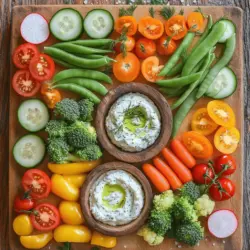

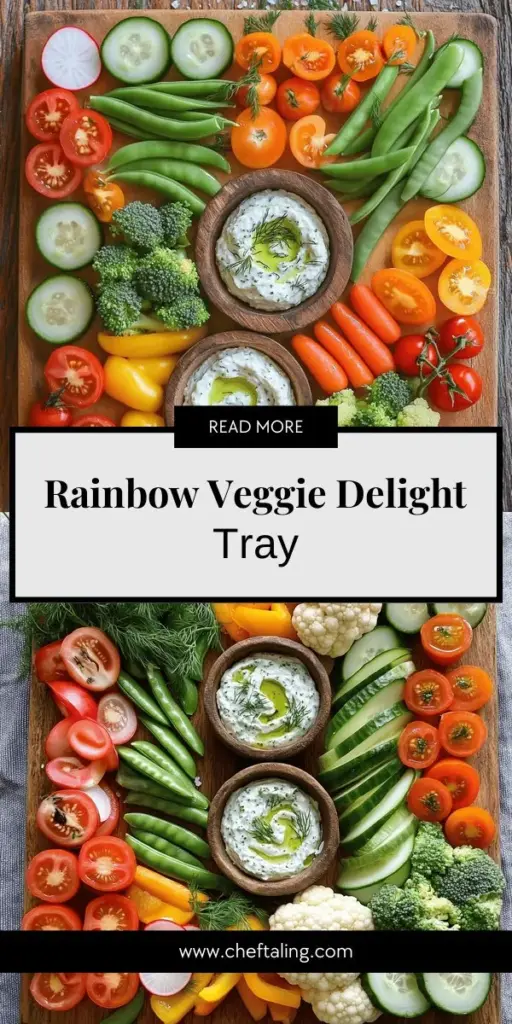
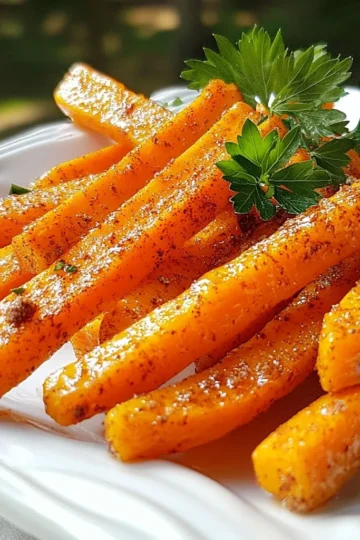



Leave a Reply